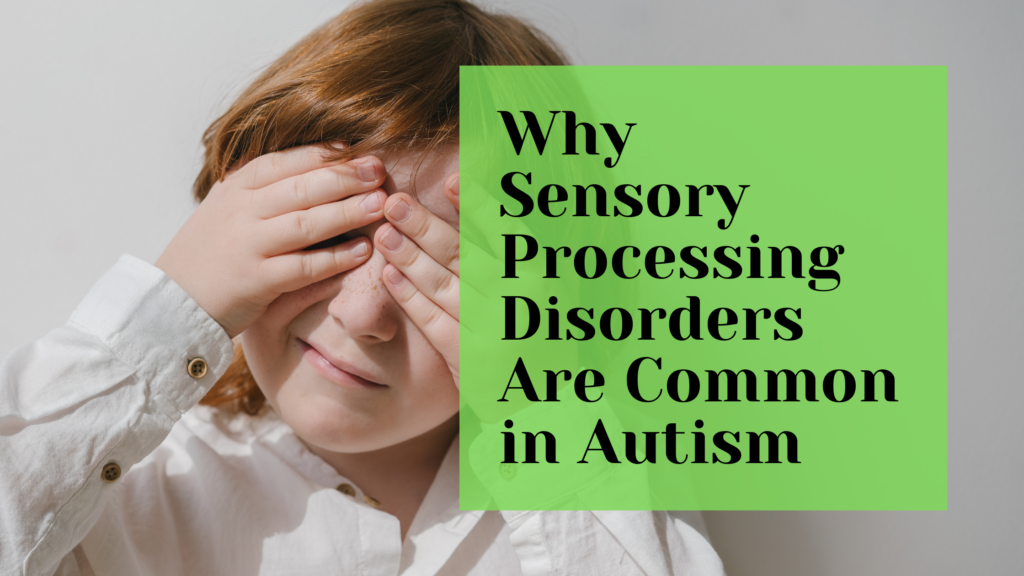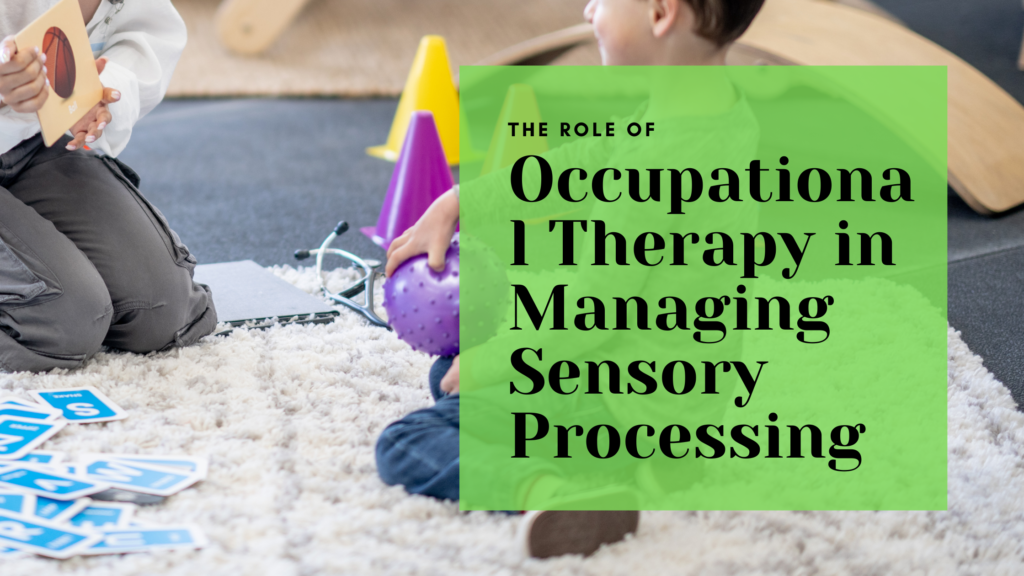I. Introduction
Overview of Autism and Sensory Processing Issues
Autism Spectrum Disorder (ASD) is a developmental condition characterized by differences in communication, behavior, and social interactions. Sensory processing issues (SPIs) refer to challenges in how the brain interprets and responds to sensory information, such as sights, sounds, textures, and smells. While ASD and SPIs are distinct, they often intersect, with many individuals on the autism spectrum experiencing significant sensory challenges.
Why Understanding the Connection Matters
Recognizing the link between autism and sensory processing issues is crucial. This understanding helps caregivers, educators, and healthcare professionals develop effective strategies to support individuals with autism. Sensory processing difficulties can profoundly affect behavior, learning, and overall well-being, making it essential to address these issues with targeted interventions.
Purpose of the Article
This article explores the connection between autism and sensory processing issues. It will cover how these issues manifest in autistic individuals, the common sensory challenges they face, and strategies to manage these challenges. By understanding this relationship, we can better support autistic individuals in leading more comfortable, fulfilling lives.
II. What Are Sensory Processing Issues?
Definition and Explanation
Sensory processing issues occur when the brain struggles to properly receive and respond to sensory information. This can result in an overreaction or underreaction to sensory stimuli, affecting how individuals perceive and interact with their environment. For example, someone with sensory processing difficulties might find everyday sounds unbearably loud or may not notice certain sensory inputs, like their name being called in a noisy room.
Types of Sensory Processing Issues
Sensory processing issues can be categorized into two primary types:
- Hypersensitivity (Over-responsiveness): This type involves being overly sensitive to sensory input. Common examples include discomfort with loud noises, bright lights, or specific textures of clothing, leading to avoidance behaviors or anxiety in overwhelming environments.
- Hyposensitivity (Under-responsiveness): Individuals with hyposensitivity require more intense sensory input to feel regulated. They may seek out strong sensations, such as spinning, touching objects repeatedly, or making loud noises to satisfy their sensory needs.
How SPIs Manifest in Different Individuals
The way sensory processing issues manifest can vary greatly from person to person. Some individuals may experience hypersensitivity to certain stimuli, like sound or touch, while others may be hyposensitive. This variability underscores the importance of tailoring sensory strategies to each individual’s unique needs.
III. Understanding Autism Spectrum Disorder (ASD)
Brief Overview of Autism
Autism Spectrum Disorder (ASD) is a neurodevelopmental condition that affects communication, social interaction, and behavior. The term “spectrum” reflects the wide range of symptoms and severity levels associated with autism, from individuals with significant challenges in daily life to those who are highly functional.
Common Behavioral and Sensory Traits in Autism
Many autistic individuals display distinct sensory traits, including unusual reactions to sensory input. These reactions can range from hyperreactivity, where everyday sensory experiences are overwhelming, to hyporeactivity, where more intense sensory input is required to engage or soothe.
Prevalence of Sensory Issues in Autism
Sensory processing issues are highly prevalent among individuals with autism. Studies suggest that between 80% and 90% of autistic individuals experience some form of sensory processing difficulty. These challenges can affect various aspects of their lives, including communication, social interactions, and learning.
IV. The Connection Between Autism and Sensory Processing Issues
How Sensory Processing Issues Are Linked to Autism
Research indicates that sensory processing issues in autism are linked to differences in brain function, particularly in areas responsible for processing sensory information, such as the thalamus and sensory cortex. These neurological differences contribute to the atypical sensory experiences commonly reported by autistic individuals.
Impact of Sensory Processing on Autistic Behaviors
Sensory processing issues significantly influence behaviors commonly associated with autism. For instance, stimming (self-stimulatory behavior) often occurs in response to sensory overload or under-stimulation. Meltdowns, intense reactions to overwhelming stimuli, are another example of how sensory processing issues can impact behavior.
Real-Life Examples
Sensory processing challenges can affect various aspects of daily life, including learning and social interactions. For example, a child with hypersensitivity to sound may struggle to focus in a noisy classroom, leading to academic difficulties. Similarly, an adult with hyposensitivity might engage in repetitive behaviors, such as hand-flapping or rocking, to seek sensory stimulation, which can be misunderstood by others.
V. Common Sensory Processing Challenges in Autism
Auditory Processing Challenges
Many autistic individuals experience auditory processing challenges, where certain sounds are perceived as unbearably loud or where they may not respond to typical auditory cues. This can lead to discomfort in noisy environments, often resulting in avoidance behaviors or the need to use noise-cancelling headphones.
Visual Processing Challenges
Visual sensitivities, such as difficulty with bright lights or visually cluttered spaces, are also common in autism. These sensitivities can make it challenging to focus in environments with too much visual stimulation, leading to discomfort and the need for frequent breaks to reduce visual input.
Tactile Processing Challenges
Tactile processing issues involve sensitivities to touch, which can manifest as aversions to certain textures or a strong preference for specific materials. For example, some individuals might dislike the feeling of certain fabrics, while others may seek out deep pressure through weighted blankets or tight hugs.
Olfactory and Gustatory Processing Challenges
Sensitivities to smell (olfactory) and taste (gustatory) can significantly impact eating habits and preferences. For instance, strong food odors might cause a person to avoid certain foods, leading to a limited diet, while heightened taste sensitivity can make some foods taste overwhelming or even painful.
VI. Strategies for Managing Sensory Processing Issues in Autism
Sensory Integration Therapy
Sensory integration therapy is a therapeutic approach that helps individuals with sensory processing issues better interpret and respond to sensory stimuli. Occupational therapists often use this therapy to gradually expose individuals to sensory experiences in a controlled environment, helping them build tolerance and improve their ability to function in daily life.
Creating a Sensory-Friendly Environment
Modifying environments to be more sensory-friendly is crucial for supporting autistic individuals. At home, this might involve creating quiet zones with soft lighting and minimal clutter. In schools, sensory corners and flexible seating arrangements can provide necessary breaks from sensory overload. In public places, tools like noise-cancelling headphones and planning outings during less crowded times can help manage sensory challenges.
Implementing Sensory Diets
A sensory diet is a personalized plan that includes specific sensory activities throughout the day to help regulate an individual’s sensory needs. This might involve a combination of proprioceptive activities, like jumping or heavy lifting, and vestibular activities, like swinging or spinning, tailored to the individual’s sensory profile.
Use of Sensory Tools and Gadgets
Various sensory tools and gadgets can assist in managing sensory processing issues. Weighted blankets and compression vests provide deep pressure that can be calming for individuals with tactile sensitivities. Fidget toys can offer a tactile outlet for energy, helping individuals stay focused and regulated. Noise-cancelling headphones are particularly useful for those with auditory sensitivities, reducing the impact of overwhelming noise.
VII. The Role of Occupational Therapy in Addressing Sensory Processing Issues
Occupational Therapy and Sensory Processing
Occupational therapy (OT) is essential in assessing and treating sensory processing issues in autistic individuals. Occupational therapists evaluate the individual’s sensory needs and develop tailored interventions to improve their ability to process and respond to sensory information effectively.
Developing Personalized Sensory Strategies
Through occupational therapy, personalized sensory strategies are developed to address specific sensory challenges. These strategies might include the use of sensory diets, environmental modifications, and sensory integration techniques, all designed to help the individual navigate their world more comfortably.
Collaboration Between Therapists and Caregivers
Successful management of sensory processing issues requires collaboration between therapists, caregivers, and educators. This teamwork ensures that strategies are consistently applied across different environments, whether at home, school, or in public settings, providing the individual with a supportive network to meet their sensory needs.
VIII. Long-Term Implications of Sensory Processing Issues in Autism
Impact on Education
Sensory processing issues can significantly affect learning and academic performance. For example, a student who is hypersensitive to noise might find it challenging to concentrate in a typical classroom setting, potentially impacting their ability to learn and achieve academic success.
Social Implications
Sensory processing challenges also influence social interactions and relationships. Individuals who struggle with sensory input may avoid social situations, leading to isolation and difficulties in forming connections with others. Understanding and accommodating sensory needs can help improve social outcomes for autistic individuals.
Daily Living and Independence
In terms of daily living, sensory challenges can impact a person’s ability to perform routine tasks, such as dressing, eating, or managing personal care. These challenges can also affect long-term independence, making it crucial to develop strategies that support daily functioning and enhance quality of life.
IX. Conclusion
Recap Key Points
The connection between autism and sensory processing issues is profound and impacts many aspects of life for autistic individuals. By understanding this connection, we can better support those with autism through targeted interventions and environmental modifications.
Encouragement for Continued Learning and Support
It is essential for caregivers, educators, and healthcare providers to continue learning about sensory processing issues and their impact on autism. Seeking appropriate support and resources can make a significant difference in the lives of autistic individuals, helping them to navigate the world more comfortably.
Further Resources
For those interested in learning more, consider exploring resources such as research articles on sensory processing in autism, support groups for caregivers, and therapeutic tools designed to address sensory challenges.
We encourage you to share your experiences and strategies in managing sensory processing issues. By engaging with others, you can contribute to a broader understanding of autism and sensory processing.
References:
- Ben-Sasson, A., et al. (2009). A meta-analysis of sensory modulation symptoms in individuals with autism spectrum disorders. Journal of Autism and Developmental Disorders, 39(1), 1-11.
- Tomchek, S. D., & Dunn, W. (2007). Sensory processing in children with and without autism: A comparative study using the short sensory profile. American Journal of Occupational Therapy, 61(2), 190-200.
- Miller, L. J., Anzalone, M. E., Lane, S. J., Cermak, S. A., & Osten, E. T. (2007). Concept evolution in sensory integration: A proposed nosology for diagnosis. American Journal of Occupational Therapy, 61(2), 135-140.


